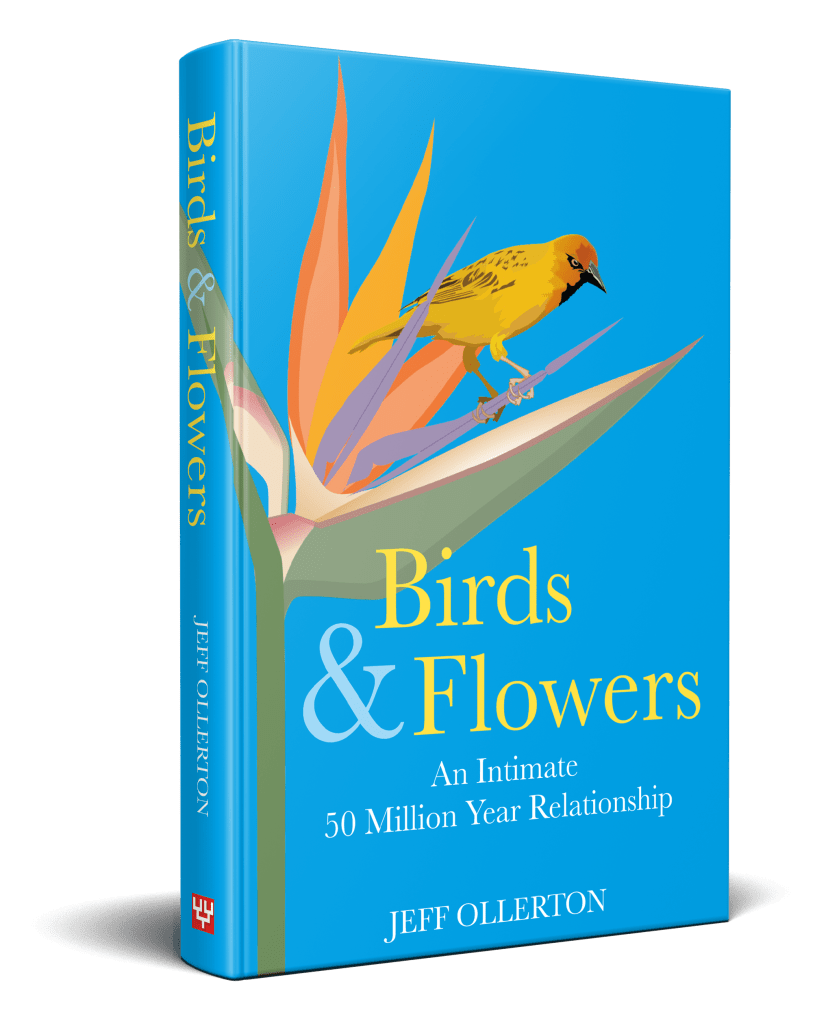
For the past year I’ve been keeping a secret from all but a few trusted confidantes: the subject and title of my next book! My publisher – Pelagic – has now announced it on their website and so it’s time to make it public. “Birds & Flowers: An Intimate 50 Million Year Relationship” will be the first book that covers bird pollination in its entirety, going beyond just hummingbirds, sunbirds and honeyeaters, to consider the more than 60 other bird families that interact with flowers, and the tens of thousands of plants that rely on them as pollinators. You can read more about it on Pelagic’s website.
The 3D mock-up of the cover shown above features an illustration by my good friend Stephen Valentine, a very talented artist who you may remember produced this painting of waxwings that Karin bought for my birthday a few years ago. I’m extremely pleased with how Pelagic have incorporated this into the design of the cover.
The book will be available by autumn I hope, if my writing schedule goes to plan!

And do you discuss the birds responsible for the pollination AND fruit dispersal of Australian loranthoids in the genus Amyema? I wouldn’t want to be disappointed.
Peeter ________________________________
But of course, mistletoes get a few mentions.
And what about Acacia terminalis sl, secreting nectar at the base of its red, glandular leaf petioles for silver eyes and thornbills during the Australian autumn? ________________________________
To paraphrase my preface, I can’t include everything! In any case, that’s not a bird-flower interaction 🙂
Jeff:
But the interrelationship between Acacia terminalis and passerines is a bird-flower interaction (below). That’s like saying that Heliconia and hummingbirds don’t have a bird-flower interactions because the hummingbird is attracted initially by the colorful bracts, not the dinky little tubular flowers. Ultimately, our field and labwork on A terminalis led to Mary Tindale to split our Gippsland trees into different species on habit, vegetative and pollinator-related characters.
Knox, R.B., Kenrick, J., Bernhardt, P., Marginson, R., Beresford, G., Baker, I & Baker, H.G. 1985. Extra-floral nectaries as adaptations for bird pollination in Acacia terminalis. American Journal of Botany 72: 1185-1196.
Kenrick, J., Bernhardt, P., Marginson, R., Beresford, G., Knox, R.B., Baker, I. & Baker, H.G. 1987. Pollination-related characteristics in the mimosoid legume (Acacia terminalis; Leguminoseae). Plant Systematics and Evolution. 157: 49-62.
OK, thanks, I don’t know those papers. I will take a look.
Congratulations! Major accomplishment in a rather neglected field. Thanks for writing this.
Pelagic Publishing notes that your book “Debunks myths, reveals little-known truths and offers ingenious new perspectives.” I can’t wait for the debunking to begin!
Thank you Ron! I hope that the book lives up to the publisher’s hype…
Congratulations; Looking towards to see the final version
Thanks!